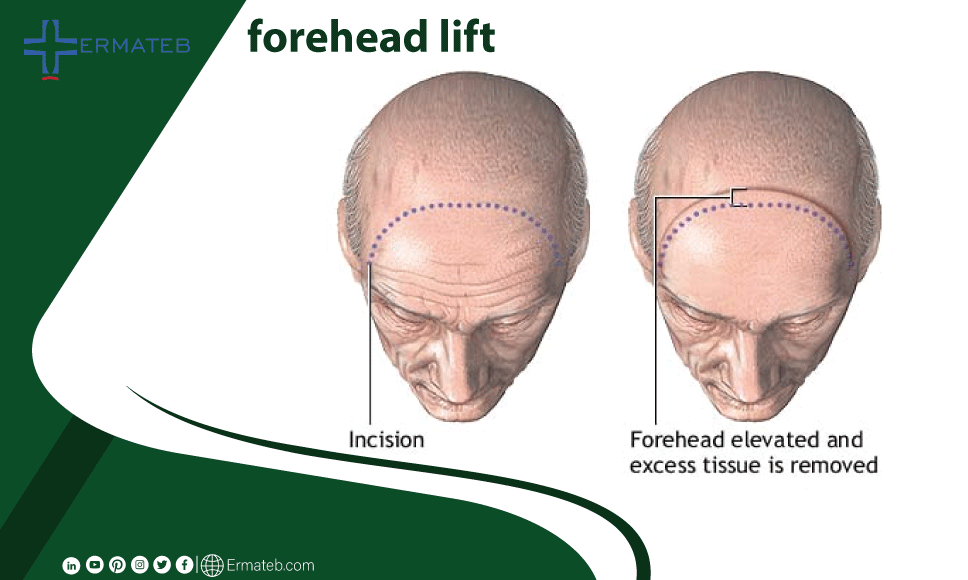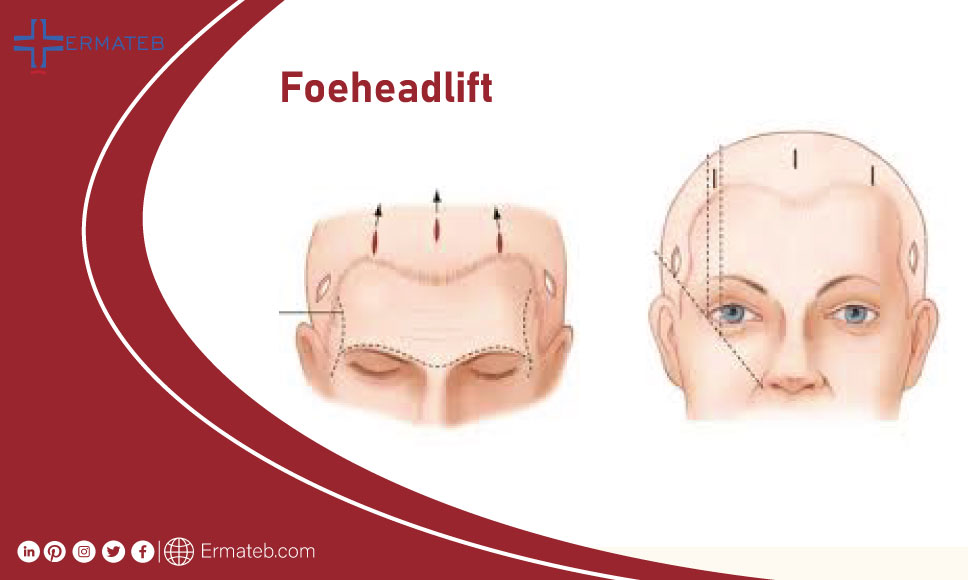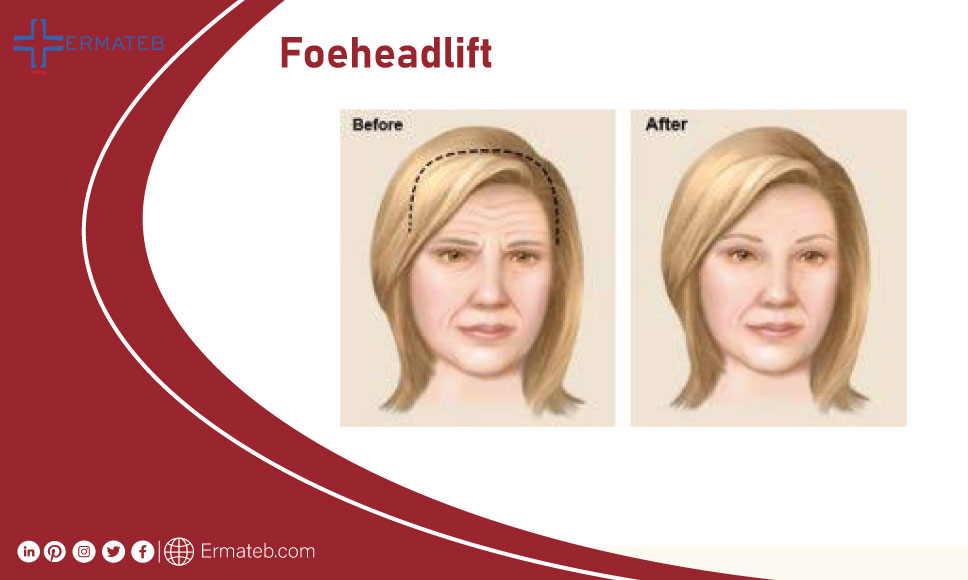
The forehead lift is a surgery to correct sagging skin on the forehead, eyebrows, and upper eyelids, and to improve the appearance of wrinkles on the forehead and between the eyes. Forehead lifts remove or alter the muscles and skin that cause signs of aging, such as drooping eyebrows and eyelids, forehead grooves, and frown lines.
This surgery may be performed alone or in combination with other procedures such as facelift, eyelid surgery, or nose reshaping. This surgery can be performed in a surgeon's office, outpatient surgery center, or hospital. It is usually done on an outpatient basis without an overnight stay.
If you decide to have this surgery, here is some useful information about this cosmetic surgery:
As mentioned, forehead lift, also known as an eyebrow lift or eyebrow lift, is a cosmetic surgical procedure used to lift drooping eyebrows that may reduce vision and eliminate deep facial lines.
The patient will be conscious but injectable local anesthesia will be used. It may also be taken for the patient to relax. In some cases, general anesthesia is used. There may be some stretching of the forehead skin during the operation and possibly a slight discomfort.
Parts of the hair are kept away from the surgery site. The hair right in front of the cut line may need to be trimmed, but large sections of hair will not be shaved.
The surgeon makes a surgical incision (incision) on the surface of the ear. This cut continues above the forehead in the hairline so that the forehead does not look too long.
If the person is bald or bald, the surgeon may use an incision in the middle of the scalp so that the scar is not visible.
Some surgeons use several small incisions and perform the surgery using an endoscope (a long, thin instrument with a small camera at the end). The specialist may use soluble implants to hold the lifted skin in place.
After the operation, which removes excess tissue, skin, and muscle, the surgeon closes the incision with sutures or staples. Before applying the dressing, wash your hair and face so as not to irritate the scalp.

There are two types of forehead lift surgery: classic forehead lift and forehead endoscopic lift.
In a classic forehead lift, the surgeon makes an incision similar to a headphone-like pattern called a crown incision. The coronal incision starts almost from the surface of the ear and continues from the top of the forehead to the other ear.
The surgeon then carefully removes the forehead skin to give full access to the underlying contents, then removes any excess tissue and fat, and rearranges the muscles if necessary. During this procedure, the eyebrows may also be at a higher level and any extra skin may be shortened.
The difference between forehead lift and classic forehead lift is the size of the incision. With a forehead endoscopic lift, the surgeon makes three to five short incisions, each less than an inch long, on the scalp. An endoscope is then inserted through one of the incisions to allow him to see the following muscles and tissues. In a different incision, the surgeon inserts another tool that lifts the skin of the forehead. Excess tissue and fat are then removed and the muscles rearranged if necessary. Like the classic forehead lift, the eyebrows may be at a higher level. Another difference between the two methods is that in the endoscopic lift, the recovery period and scar are minimal compared to the classic forehead lift.

1. Before surgery, you will have a consultation with the patient who will ask about this including your history and you will have a physical examination and psychological evaluation. You may want to bring someone with you during the appointment.
2. Easily ask all your questions and make sure you understand the answers to your questions. You need to be fully aware of the preoperative preparations, the procedure itself, and the postoperative care.
For a week before surgery, you may be asked to stop taking blood-thinning medications such as aspirin, ibuprofen (Advil, Motrin), and naproxen (Aleve, Naprosyn) because these medications may increase bleeding during To be operated on.
If you are taking warfarin (Coumadin, Janton), Dabigatran (Pradaxa), Apixaban (Elixir), Rivaroxaban (Xarelto), or Clopidogrel (Plavix), talk to your surgeon before stopping or changing these medications.
In the days before the surgery:
Ask what medications you should take on the day of surgery.
Always tell your doctor if you have a cold, flu, fever, herpes, or any other illness before surgery.
1. You may be asked not to drink or eat anything after midnight the night before the operation. If you feel dry, rinse your mouth with water. Be careful not to swallow.
2. Take the medicines you have been told with a small sip of water.
3. Arrive on time for surgery.
4. Do any other specific instructions that are given to you.
1. To prevent bleeding and edema (swelling), the area is wrapped with a sterile pad and an elastic band. At the surgical site, you will feel temporary numbness and discomfort that can be controlled with medication.
2. Keep your head up for 2 to 3 days after surgery to avoid swelling.
3. Bruising and swelling occur around the eyes and cheeks but disappear within a few days to a week.
3. With nerve regrowth, numbness of the forehead and scalp disappears and itching or tingling begins. It may take up to 6 months for you to no longer have these feelings. The bandages are removed one or two days after surgery.
4. Within 10 to 14 days, the stitches or clamps are removed in two steps.

1. The risks of anesthesia for this surgery are the same as for other surgeries, which include:
1. Reaction to drugs
2. Respiratory problems
3. Bleeding, blood clots, infection
Risks of forehead lift surgery include:
1. A blood clot under the skin (hematoma) that may require surgical evacuation
2. Damage to the nerves that are responsible for innervating the facial muscles (this damage is usually temporary, but may be permanent)
3. Creating wounds that do not heal well
4. Pain that does not go away
5. Sometimes, a forehead lift can make it difficult to raise eyebrows or forehead wrinkles on one or both sides. If this happens, re-surgery may be needed to straighten both sides. If you have had upper eyelid lift surgery before, a forehead lift may not be recommended because it can irritate you and make it difficult to blink.
6. In most people, the incision for the forehead lift is below the hairline. If your hairline is raised or receding, you may develop a thin scar after surgery that requires you to style your hair to partially cover your forehead.
7. If the forehead skin is too tight or there is a lot of swelling, a large scar may develop.
8. In some cases, going bald may happen along the edges of the scar. This can be treated with careful expulsion of scar tissue or hair loss areas to create new scars. Extremely durable going bald after a temple lift is uncommon.
9. It is also uncommon to damage the nerves that control the movement of the eyebrows. This can make you lose the capacity to cause a commotion or kink your brow. The medical procedure might be expected to address this issue.
10. Loss of sensation around the incision is particularly normal in the classic forehead lift. Although usually temporary, it can be permanent
11. During the forehead endoscopic lift, the possibility of complications is low, which causes the surgeon to change the technique and perform the classic forehead lift. This can cause a wider scar and a longer recovery period.

